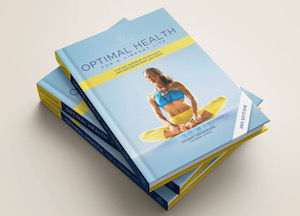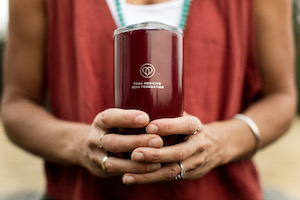Articles, Cristina Kuhn, In the Press, Resources, Yoga Medicine® News
Ayurveda In 2020: Why This 5,000-Year-Old Practice Is Still As Relevant As Ever
By Julia Guerra for MindBodyGreen.
If you’re an avid yogi, swear by oil pulling, practice intermittent fasting, or sip warm lemon water first thing in the morning, you’re one of many people subscribing to the ancient practices of ayurveda.
Ayurvedic values can be applied to every aspect of life—from physical health to mental well-being, beauty rituals, and diet. “The literal definition of ayur is ‘life’ and veda is ‘knowledge,'” ayurvedic health counselor and Yoga Medicine instructor Cristina Kuhn tells mbg. “[It] is the knowledge of life or the knowledge of how to maintain health in daily life and therefore support longevity.”
And it’s hardly a recent development. Ayurvedic expert Shrankhla Holecek, MBA, tells mbg that the first teachings of ayurveda are documented in the vedas—Indian scriptures on spirituality and life that trace back over 5,000 years. They describe what modern medicine is just beginning to grasp: That the mind and body are intricately connected, and one of the most effective ways to heal and transform the body is through the mind.
Here are 10 modern well-being practices that actually stem from this ancient mind-body medicine.
10 Practices That Have Roots in Ayurveda:
1. Oil Pulling
You know the saying “the eyes are the window to the soul”? Well, according to ancient Indian practices, the mouth is the mirror that reflects a person’s general health, which is where oil pulling comes in. Cited in ancient ayurvedic texts Charak Samhita and Sushruta Samhita, oil pulling is the act of swishing oil in the mouth to promote oral cleanliness.
“[Oil pulling can help with] ridding the mouth of ama (excess impurities and toxins), freshening breath, and even whitening the teeth,” explains Holecek. “It can also feel like a massage on the gums and tongue.” It’s recommended that oil pulling be done first thing in the morning, on an empty stomach, for up to (ideally) 20 minutes straight.
There isn’t enough scientific evidence to definitively say that oil pulling is beneficial for oral hygiene, but the morning ritual has nonetheless affected Western culture. Even celebrities like Ashley Benson, Gwyneth Paltrow, and Miranda Kerr swear by the practice.
2. Drinking Water at Room Temperature
According to ayurvedic protocol, gulping down ice water is a no-go. “Ayurveda does recommend sipping water during meals,” Holecek says, adding that the temperature of that water depends on your dosha, or energetic type—preferably warm for kaphas and vatas, room temperature water for pittas. “[But] sipping is the operative word here as the ideal state of your stomach post-consumption of a meal should be a third each of water, air, and food.”
The healthy habit of drinking lemon water first thing in the morning is also rooted in ayurveda. The nutrients in the lemon are thought to help stimulate stomach acid and aid in digestion.
3. Tongue Scraping
Unlike oil pulling, the benefits of jiwa prakshalana, or tongue scraping, are backed by scientific evidence and encouraged by health experts.
“When we sleep, our digestive system remains awake, removing toxins from our body by depositing them onto the surface of our tongue,” Gillian Mandich, M.S., Ph.D., previously told mbg. The benefits of tongue scraping include preventing halitosis (aka bad breath), boosting your immunity, improving your dental health overall, and enhancing your sense of taste. If you don’t scrape away these toxins, however, “they get reabsorbed by the body and can lead to respiratory difficulties, digestive problems, and a compromised immune system,” Mandich warns.
4. Eating a Balanced Diet
Eating an abundance of whole foods is one of the most foundational elements of ayurveda. However, unlike most ways of eating, ayurveda’s system focuses on not only what we eat but how we eat it.
“Ayurveda teaches us that not only is the quality of the food we consume essential for health, but how we connect with food is just as important to our well-being,” explains clinical herbalist Lindsay Kluge, M.S., CNS, LDN. Cooking, working with fresh ingredients, sharing meals with loved ones, and eating mindfully (chewing slowly, identifying the different flavors, smelling what’s on your plate, etc.) all help make food so medicinal in ayurveda.
5. Intermittent Fasting
Those practicing ayurveda try to live in alignment with their circadian rhythm. This internal clock tells us when to go to bed at night and wake up in the morning, and it cues us to eat our first and last meals of the day.
“[According to ayurveda,] we are best served to align our daily routines, as well as modern wellness strategies to leverage these default functions,” certified yoga and ayurveda health coach Carly Banks tells mbg. One of these strategies is intermittent fasting, which requires eating during a time-restricted window. (You could eat for eight hours, then fast for 16, for example.) Recently, Western culture especially has embraced this way of eating as a tool for weight loss, glucose tolerance, immune system support, and brain functionality.
“What has long been theorized in ayurveda and is now proven by modern science is when the sun is highest in the sky, our digestion is at its strongest,” Banks explains. “When aligning this approach to ayurveda and circadian living, that eight-hour window specifically becomes 10 a.m. to 6 p.m., with the largest meal being taken at noon.”
6. Dry Brushing
Ayurveda educator Salila Sukumaran tells mbg that while dry brushing isn’t directly an ayurveda ritual, it is a Western interpretation of the ayurvedic practice called udwarthanam.
“Udwarthanam or ubtan is the equivalent [of dry brushing],” says Sukumaran. “It is a massaging of the body with dry powders made of sweet spices and mung pastes, mustard paste, etc., to wash off the excess oils, to soften and reduce cellulite, and to help strengthen the body.”
Udwarthanam is often administered in ayurvedic healing centers, but the practice of dry brushing can also be done at home using a stiff bristle brush.
7. Self-Massage
Self-massages are mentioned in the original ayurvedic texts as rituals that promote both skin and overall health, with abhyanga, or oil massage, being the main attraction. Abhyanga can be done for anywhere between 15 and 45 minutes, followed by a shower to soap off any excess oil. By massaging sesame oil in the fall/winter and coconut oil in the spring/summer in circular movements along the joints and bones, dean of the Kripalu School of Ayurveda Erin Casperson tells mbg that the skin will soften and the body will become strong and more resistant to diseases.
8. Acupuncture
Although acupuncture is a kind of alternative medicine rooted in traditional Chinese medicine (TCM), experts consider the practice complementary to ayurvedic beliefs. This is because a) acupuncture, like ayurveda, dates back over 5,000 years, and b) TCM is rooted in similar beliefs to ayurveda.
“Acupuncture believes in the meridian lines throughout the body and [that] when these energy patterns become blocked or imbalanced, this is when medical symptoms may arise,” Samantha Parker, C-IAYT and personal trainer tells mbg. Those who practice ayurveda also believe in the flow of energy, and the interconnectivity of energies, which is where the two systems run parallel: “Both aim to enhance health and overall quality of life by creating balance in the individual rather than focusing on the disease.”
9. Yoga
This list wouldn’t be complete without the inclusion of yoga. In Western society, yoga has evolved, expanded, and been re-imagined. Things like drunk yoga, goat yoga, AcroYoga, and SUP Yoga are all examples of the ways Western culture has put its spin on the practice, for better or worse.
“Yoga [and other meditative practices] has become more commonplace,” says Monisha Bhanote, M.D., FASCP, FCAP, a triple board-certified physician and yoga medicine teacher. “[It] has transformed into different types of practices, most with roots which remain in the original purpose of combining breath and movement.”
10. The Doschic Approach
Sound familiar? The Doschic approach to well-being is a major component of ayurveda that modern companies have jumped on, and mbg called it out as one of its wellness trends to watch back in 2019. Knowing what dosha(s) you’re dominant in is thought to help you build a lifestyle that keeps you feeling balanced and vibrant. Eating for your dosha is thought to be especially important, so it makes sense that we’ve seen ayurvedic foods like ghee and turmeric become more mainstream in Western culture.
What is It About Ayurveda That’s So Timeless?
In a word: nature.
“Ayurveda is rooted in our connection with nature, and its influence upon us (i.e., how we respond and adapt to our natural world) [is what makes this system so timeless],” Kluge tells mbg. “Simply by being more in touch with and observant of our own environment and habitat around us, we can use that practice to be more attuned to our own body and cultivate a deeper understanding of what we need to live a happy, healthy, joyful, and abundant life.”
The Next 5,000 Years for Ayurveda
Whatever is to come in the next 5,000 years of ayurveda, one thing experts seem to agree on is that it will reflect what we as a society, and as individuals, need from the ayurvedic practices.
“Ayurveda will see expansion over the globe and each region will discover their own ayurveda from the past,” Sukumaran tells mbg. “This is the ayurveda that will work for the people of that region. While it may benefit a Westerner to incorporate food and supplements that grow in India in abundance, this is not a sustainable practice as each region has its own ancient wisdom, its own plant medicine to rediscover.”
While some ancient practices fade as their culture progresses, ayurvedic practices have withstood the test of time. From spiritual values to well-being rituals, the foods we eat and our relationship with nature, so much of our daily lives are rooted in ayurvedic influence, and it will be exciting to see where these practices take us next.













